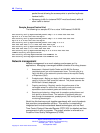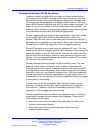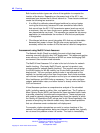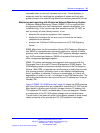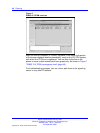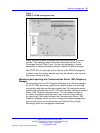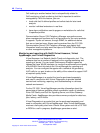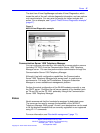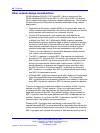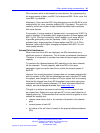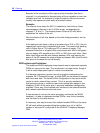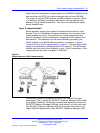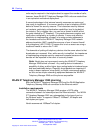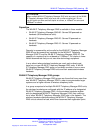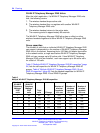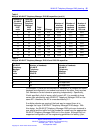
48 Planning
Other network design considerations
WLAN Handsets 2210/2211/2212 are 802.11b-only devices and the
WLAN Handsets 6120/6140 are 802.11b, 802.11g and 802.11a devices,
which creates challenging choices for network deployments. The following
list describes some of the points to consider when determining network
deployment:
•
Separation of devices by multiple SSIDs on the same radio does not
create multiple shared mediums—the devices still transmit and receive
using common radio resources on a common channel.
• Current QoS mechanisms in the industry are most effective at
protecting and prioritizing traffic on the downstream, that is, from AP
to Mobile Unit (MU). Wi-Fi Multimedia (WMM) improves upstream
prioritization by giving a statistical edge to different classes of devices
so they are more likely to transmit ahead of lower class devices. Still,
other devices sometimes cheat on the contention window to gain a
statistical advantage, though there are drawbacks to this method.
There is no real arbitration or coordination between multiple devices
that need to transmit packets upstream.
•
The 802.11g devices in a mixed 802.11b/g network are statistically
favored by a 2:1 ratio over 802.11b devices. For example, this means
that if there is one 802.11g device and one 802.11b device and both
are trying to saturate the medium with a data transfer, the 802.11g
device transmits, on average, two frames for every one frame from
the 802.11b device. If there are two 802.11g devices for every one
802.11b device, on average, four 802.11g transmissions occur before
one 802.11b transmission occurs.
•
Although 802.11g devices transmit more often, because of higher data
rates, they spend less time transmitting packets. This means that
802.11g devices are not necessarily favored in the network. Having too
many 802.11g devices relative to 802.11b devices upsets this balance.
There is no easy way to determine whether to maintain an 802.11g-only
network or an 802.11b-only network. If there is a significant amount
of upstream traffic from data devices, the best course of action is to
keep data devices off the 802.11b/g network entirely. Large numbers of
802.11g devices can also cause problems with 802.11b handsets on the
medium. However, if you force the 802.11g devices to use 802.11b for
communication, the situation can become worse.
Disabling 802.11g support and maintaining a dual-mode 802.11a/b
network can make 802.11a more attractive for dual-mode data clients and
reduce the amount of data devices using the 2.4 GHz spectrum. Enabling
802.11g support can increase the number of data devices sharing the 2.4
Nortel Communication Server 1000
WLAN IP Telephony Installation and Commissioning
NN43001-504 03.04 Standard
23 September 2008
Copyright © 2004–2008 Nortel Networks
.



